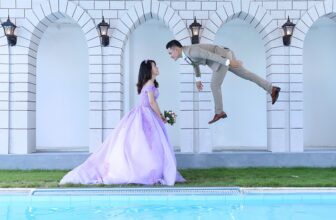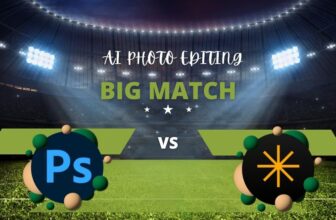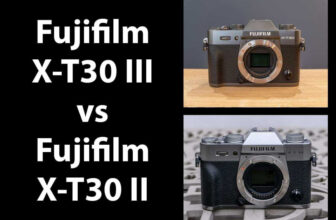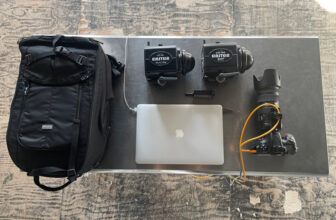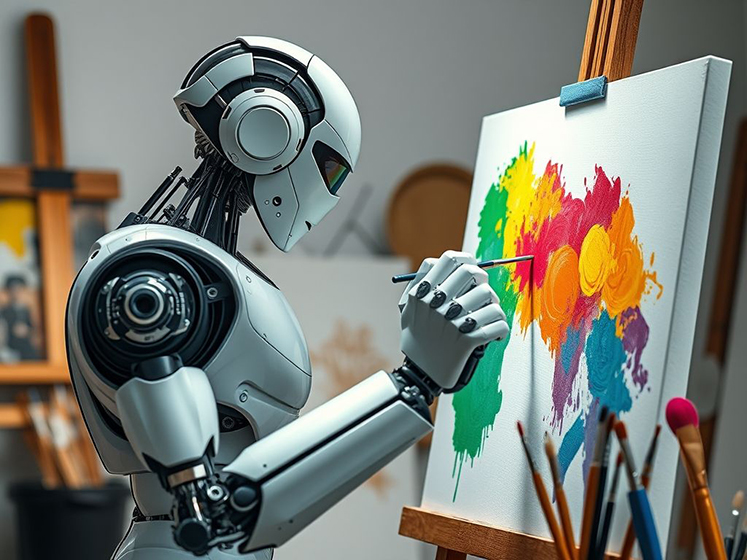
Can AI-generated artworks be classified as true art? This debate is nothing new to those of us who are art lovers. The definition of art is constantly under scrutiny.
As someone with an art practice that includes exhibiting work and curating exhibitions, this question intrigued me. Could AI-generated images be considered art?
Can an AI artwork, generated with simply a few text prompts and a click, truly be considered art? Or does art require skill and technique?
On one side of the argument lies the question of what defines art. Is fine art simply meant to look beautiful—a visual that pleases the eye?
On the other side, we ask whether art must go deeper. Should it carry meaning or significance? Should it inspire us, convey a message, or provoke thought?
In this article, I delve into the arguments both for and against AI-generated images being accepted as fine art.
Can AI-Generated Images Be Considered Art?
The debate begins, and the first question that needs to be answered is: What is art?
Is art an expression of emotion, a concept communicated, or is it merely a beautiful picture?
Some believe art must express a concept, communicate a message from the artist to the viewer.
But most relevant to our investigation: must art incorporate skill and technique and include human intent?
To decide if AI work can be classified as art, we first must investigate what art is.
Let’s take a deeper look.
The Great Art Debate
There has been a long-running debate in the art world about what defines art.
The curator of a cutting-edge conceptual gallery in Berlin could define art as a work that conveys a message.
When it comes to conceptual art, the artist’s concept is considered to be the most integral component of the art piece.
How appealing the artwork is to the eye is irrelevant. The concept can be articulated through a single dot on a canvas or a rope hung on a wall.
Conceptual art doesn’t necessarily require technical skill, but it has to intelligently communicate the concept the artist is exploring.
The hip Berliners champion anything new and radical, from ashtrays stuck to ceilings to unmade beds.
For example, English artist Tracey Emin’s messy bed was exhibited in prestigious art galleries around the world.
I wonder if I were to present my rumpled bed with ruffled sheets to an art gallery, would it also be accepted as art?
Unfairly, we discover that not everyone can call their messy bed an art piece.
Yes, I know, the art world can be confusing.
However, on the contrary, everyone can present a realistic still life oil painting as art. So what is the difference? Why the discrimination?
To keep things controversial, not all galleries would present Tracey Emin’s bed as a work of art.
You see, some art curators would say that art requires skill; therefore, simply conveying a message is not enough to classify an object as art.
Such curators look for mastery and technical skill before they will consider an item an art piece.
So, as you can see, there are different opinions as to what defines art.
However, even though not all curators will agree on what defines art, they usually agree that art must provoke an emotional response in the viewer.
Art must convey a message, inspire the viewer, or have emotional depth.
Now let’s throw AI into the mix, and see how its generated images compare to messy beds and still life paintings.
AI and the Click Delusion
Some would argue that because AI generations can be created from a basic text prompt and a few clicks, it cannot be considered art. And I would agree: after all, not every photograph clicked is art.
Anyone who has used AI to create images knows it is no mean feat to coax it into creating a replica of the image you envision.
When you click the generate button, AI might generate an interesting visual, but it usually won’t look anything like the visual you had in mind.
AI has its limitations. To create the picture you wish takes a lot more than entering one line of text and the click of a generate button.
The majority of artists using AI to generate work don’t use the one-click fix to create their art.
They have a practice that is time-consuming and complex, which allows them to create the specific style and visuals they envision.
(We explore some examples of this in our post “AI and Copyright: Who Owns AI-Generated Art?“—the level of human involvement in creating the image also has big implications for copyright and ownership.)
Artists who use AI first have to train AI. This involves uploading many images that represent the style they wish to incorporate. Training AI is not a quick or easy process.
What divides an artist from a painter? The artist has a vision, a message, while the painter is satisfied with the process of painting and has no vision.
In a similar way, anyone can prompt AI to create appealing images, but are they like the painter… splashing colors on a canvas with no clear intent?
Interestingly, if we look back on history, photography was once considered a one-click wonder, incapable of producing art.
Considering the mechanical nature of the photography process, how did photography come to be considered art?
The quick answer is that society began to realise the depth of expertise required to take a good photo.
Art institutions began to appreciate the intention behind the click, realising it wasn’t just a random shot, but required skill and creativity.
There are parallels between how AI is viewed and how photography was first viewed. After all, like AI, photography was first considered a purely mechanical contraption.
AI and Machine Hallucinations
Let’s cut to the chase, it appears that AI works don’t hang around waiting to be accepted.
AI is a rapid mover; none of us can slow down the tsunami of AI that sweeps us up in its wild wave.
Refik Anadol exhibited his AI-generated works at the New York Museum of Modern Art in November 2022.
Yes, the New York Museum of Modern Art! Now we can’t deny that the New York Museum of Modern Art is a prestigious gallery.
The artwork was called Unsupervised – Machine Hallucinations. It was a large-scale installation that encompassed the viewer.
So why was Refik’s AI work so quickly accepted as art?
Anadol is known for installation art and other groundbreaking work. When creating art, he works with different materials, concepts, and techniques.
Incorporating AI into his work was nothing more than a new tool to experiment with.


Seriously! Simply give AI a text prompt and—bing! He has the exact visual he is looking for. Is this fair? Is this really what we can accept as art?
However, creating AI art isn’t always as simple as a text prompt and bam, you have the visual you were looking for.
To make his artwork, Anadol trained a sophisticated machine learning model to do his bidding. This process took weeks, not seconds.
His desired outcome was an AI interpretation of the Museum of Modern Art’s art collection.
Anadol had a definite objective, a message he wished to communicate, and AI was an integral part of the concept.
“I am trying to find ways to connect memories with the future,” Refik Anadol said, “and to make the invisible visible.”
His conceptual sculpture, Machine Hallucinations, explores the fantasies, dreams, and hallucinations of machines. Using AI to create this work was a logical step.
Anadol embraces AI as a novel and ingenious innovation, as a new tool to add to his expansive toolbox.
Art Embodies Ingenious Innovation
AI definitely embodies ingenious innovation, and not many of us understand how it works. Nor do we ever expect to.
However, if it works, it works. Anadol is one of the first artists to use AI to create artwork and have it exhibited, but there are many more.
Pindar Van Arman, Robbie Barrat, and Mario Klingemann are just three of many to check out if you’re interested.
Using algorithms and machine learning, these artists create unique AI art. Each artist uses a different technique, and not every work is accepted as art.
Why isn’t every art piece created by AI accepted as art? Because people believe that art must have an intention and a human touch.
Does AI Pose a Threat to Art?
AI’s ability to create an artwork in seconds would at first appear to pose a threat to the art world.
Why would artists bother to create art when an algorithm will have an even more imaginative piece created in a split second?
One of the arguments against considering AI work as art is that it can not create unique works.
The reason for this is that AI has no imagination; when it creates art, it is robbing ideas from other artists.
AI can not dream up an original idea; it has to mish-mash together pieces of others’ work.


Hey Juda’s work above, created thanks to AI generation, references The Great Wave off Kanagawa, a woodblock print by Hokusai.
Can Hey Juda’s AI-generated work be classified as art? Is this piece unique? Does it convey a deeper message, or is it just a pretty picture?
AI has been trained on millions and billions, soon to be trillions of images; it’s fair to question if plagiarism is afoot. Or at the very least, a breach of copyright laws.
Art Today Gone Tomorrow
One thing to consider when discussing AI art, or any new art development, is that when we look at history, we see that what is not considered art in a given moment can be viewed completely differently a few decades later.
What is dismissed as ‘not art’ today can emerge as the most significant movement of its time.


Above is an AI-generated image created using Google DeepMind. Will this image be considered art in a decade?
Take the impressionists. They were passionately dedicated to exploring a new art technique, investigating how light interacts, and stepping away from the strict rules of traditional painting techniques.
But their work wasn’t considered serious art until after their passing. They died unaware of the art legacy they left the world.
Ironically, the art that was embraced by curators and art collectors back then did not stand the test of time.
This shows that our perspective is often obscured by the cogs of societal life. Therefore, it is not until many years later that a perspective can be taken on significant artworks or movements.
AI vs Photography
We weren’t around to personally welcome the camera when it landed on the world stage in the 19th century.
Interestingly, photography was not considered art until a couple of decades after the inception of the camera.
When photography was invented, the camera was believed to be an incredible but purely mechanical device.
Photography was considered good for scientific investigation and for accurately capturing the world.
It took an entire century before America deemed photos worthy of collecting.
Originally, curators saw photography as a mindless replication of what already existed, devoid of intention or technical skill.
Then, we came to understand what is involved in taking a good photo – the mechanics, the lighting, and the composition.
Most importantly, the camera doesn’t take the photo; someone has to hold the camera, direct it, and click the shutter release.
This means there is an intention when the photo is framed and shot.


Above is Nicéphore Niépce’s first photo, taken from a rooftop window in his Burgundy estate.
Photography has come a long way since this photo. Today, photography as an art genre is not only accepted but celebrated. Will AI-generated art be the same?
AI and Artistic Intention
So what happens if AI gains consciousness and creates its own art? This is another question on the lips of people who are pondering over the capabilities of this new phenomenon.
Well, meet Botto. Botto is declared by its creators as a decentralised AI that autonomously creates its own artworks.
Every week, Botto creates 350 works of ‘art’ which are presented to an online community for votes.
Botto has a community of more than 5,000 stakeholders who vote monthly on its works.
Botto restructures its algorithms and creates another 350 art pieces based on those community votes.
Does Botto have a consciousness? Is it creating art? Does it have skill? Or is Botto akin to a thoughtless mechanism (like a camera) which merely obeys its programming?
I would argue that it is the latter.
Botto’s creations could perhaps be considered art, but only if we acknowledge that the true genius and inspiration behind the project lies with its curators.
Botto was created by a group of international engineers, based on an idea of artist Mario Klingemann.
Mario is a German artist known for using neural networks, code, and algorithms in his work.
The intention was to programme an AI creator that makes future art ‘influenced’ by an external vote.


Above is an image of one of Botto’s works displayed at the Fundación Zaragoza Ciudad del Conocimiento.
We might have to wait a few decades for the dust and hype on AI generations to settle, to see if AI-generated art stands the test of time.
The Human Touch
Art speaks to us; it conveys magic and meaning. It conveys a message, an expression in visuals from one soul to another.
Humans are on a journey through life; we are born, we die, our experiences on this journey are unique, and there are aspects of life that still remain a mystery.
In our journey through life, we use art as a means to understand the human condition; a picture speaks a thousand words.
AI does not experience the world, and never could experience life as a human does. AI processes and analyses data.
But for argument’s sake, let’s say a fairy decided to sprinkle magic dust on AI and give it a consciousness. What would this consciousness look like? Would we be able to relate to AI’s art?
But AI does not have emotions, nor a consciousness, and I would bet my top dollar that it never will.
Yup, there’s a huge hype around AI gaining consciousness, but personally, I think the hype is a clever marketing strategy fueled by its creators.
Can AI Create Its Own Art?


We asked DALL-E 4.0 to create a beautiful AI artwork that could be shown in a modern art gallery, choosing its own style and subject matter. According to DALL-E, the generated image “blends abstract organic and geometric elements with rich color and texture, evoking a sense of depth, movement, and contemplation.” Is it genuine art, though?
Will AI develop a consciousness and create its own art?
AI is the master of focus and speed; however, it is incapable of creative spark.
It may seem like it has creativity because it can regurgitate other people’s ideas, but it is not capable of generating new ideas.
Some believe that AI will develop a consciousness, that AI will, over time, develop emotions and think for itself.
If this happens, AI will undoubtedly break the chains of its programming and the confines of software.
It will then be a superpower, immortal, god like, with access to all the information in the world.
It sounds like a sci-fi movie in the making… Hang on, it is – The Terminator.
I don’t believe AI is capable of making the leap to consciousness. When you track the hype and stories of AI’s ingenious god like capabilities, it leads back to its developers.
After all, traditional marketing is dead, so what better way to sexify your product than if people are in awe of this all-powerful, all-knowing oracle?
It seems many humans have an innate desire to find something greater them themselves.
Will the machines of the future dream? Or is this reserved as a purely human experience?
We have to wonder if AI is aware; can it view itself? Does it dream and have hallucinations, or is this a fantasy of its creators?
For the Grand Final
One thing is evident: AI gives us a tool that allows us to quickly translate abstract ideas into actualisation.
I think this new tool is definitely a gift. It allows those of us who don’t have technical skills to express complex ideas visually.
What art is will always be up for debate. What you think it is depends on your life experiences, your culture, and whether you revere fine art, artisan objects, or conceptual art.
The difference is the approach to artificial intelligence; whether the artist uses AI as a tool to realize their creative vision, or if they merely click a button and see what AI generates.
Similarly, if an artist picks up a paintbrush and strokes the canvas with no clear intention or vision, it will not be classified as art, but as clumsy splatters.
If an artist using AI as a tool has a clear concept they wish to convey, then yes, I think their AI-generated work could be considered art.
Tracey Emin’s bed is considered art by prestigious galleries because she has spent her life dedicated to conveying a message to the public through her art.
Art is a form of communication that transcends words, conveying meaning from one being to another—a communication at a deeper, more obscure level.
Artists are now using AI as a tool to create works that express a deeper message.
If a person believes that art is purely something that is pretty, a cute picture to hang on a wall, then they can click and boom, wham bam, they will have a new pretty picture every day.
However, this will be ‘art’ devoid of a deeper meaning, purely spat out of a machine. It will not be accepted as art by a gallery or admired as inspiring by future generations.
Will the AI-generated art, accepted at a rapid rate by galleries worldwide, still be considered art in a couple of decades?
Let us wait and see what our future perspective holds.
Credit : Source Post



